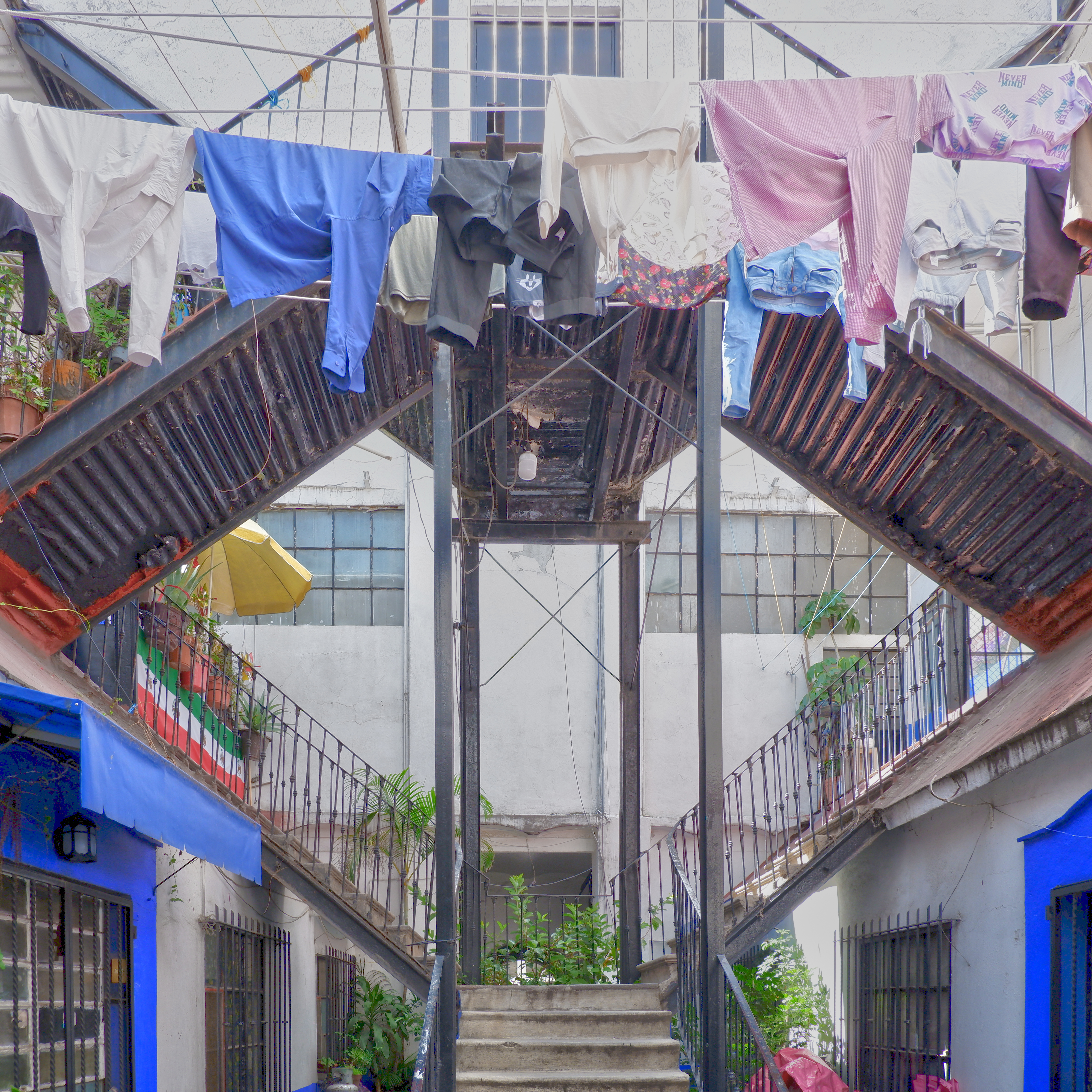Vecindad: Redistribution of Domestic Space in Mexico City 1519-2020
Research Project | Lola Lozano Lara | 2019 - ongoing

Departing from the ambivalence inherent in the term vecindad, this thesis argues that the study of a domestic architectural typology can become a framework through which a city’s history and make-up may be read. Vecindad is best translated as ‘neighbourhood’ and is cognate with vecino, which means both ‘neighbour’ and ‘nearby,’ thus alluding to proximity, a relationship of close distance. Furthermore, a vecindad in Mexico is a building typology that groups households around a central street or courtyard. As such, this thesis investigates the history of domestic space and its redistribution through the popular yet disappearing vecindades of the city centre, characterised by groups that share a common domesticity. The notion of vicinity is central to the thesis’s argument, as observed within the historic and legislative context of housing in Mexico City from the pre-colonial period up to the present day. The thesis acknowledges an indigenous Mexican tradition of household collectivity and city-making that endured and actively informed centuries of Spanish colonialism and later independent political reform.
The investigation traces the history of Mexico City through the exploration of three distinct urban and architectural categories and their development over time: the grid, the urban block and the house. Each category finds a dialectic counterpart within indigenous Mesoamerican ideologies embodied in Nahua cultures: the altepetl, tlaxilacalli and calli. Their study within the context of colonial and later republican Mexico City offers an alternative reading of how the city was inhabited from the outset and the ensuing housing legislation and instrumental reforms that followed. The thesis also follows the city inhabitants’ changing and varying identities, paying close attention to how these inform the redistribution of their space and use of housing (and services) as a result of necessity rather than design. The study responds to a pressing need to investigate and construct alternative forms of housing that can respond to current needs that are not satisfied by existing industrial models.
With the support of FONCA-CONACYT Estudios en el Extranjero